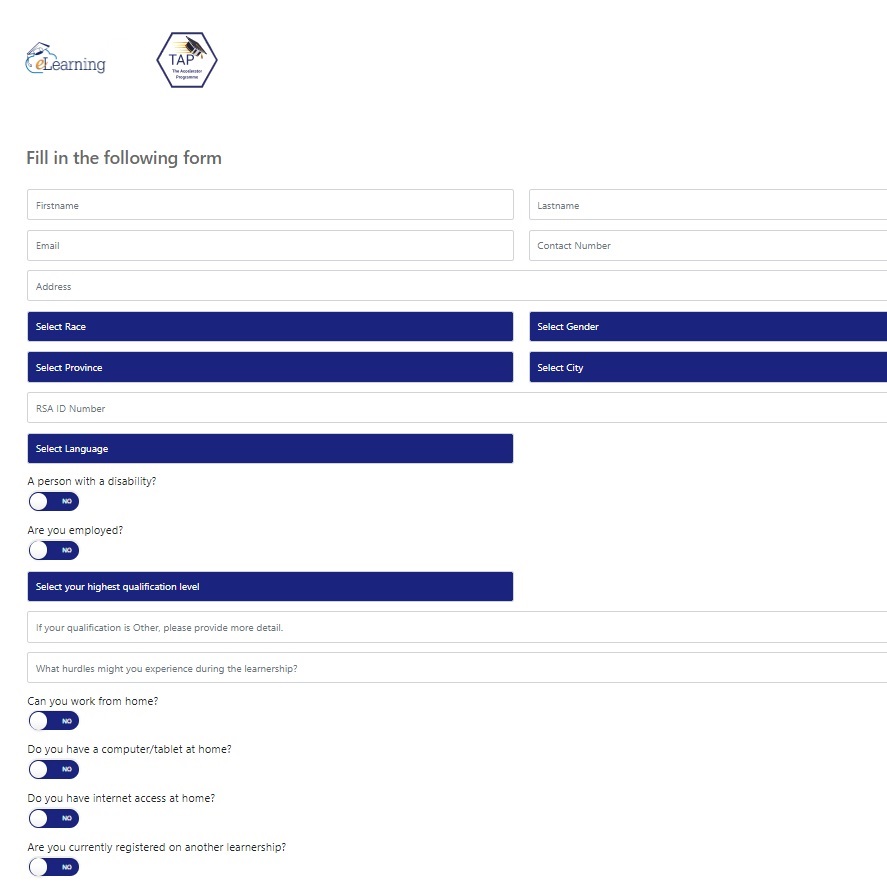The Benefits of LMS Learnership for Upskilling and Reskilling Employees
The Benefits of LMS Learnership for Upskilling and Reskilling Employees
Blog Article
Strategic Application of LMS Learnership Programs for Lasting Worker Development
In the realm of labor force advancement, the strategic implementation of Learning Management System (LMS) learnership programs stands as a linchpin for cultivating lasting employee growth within companies. By delving right into the intricacies of developing and executing LMS learnership programs with a critical lens, companies can open a huge selection of advantages that not only boost worker abilities yet additionally add to the total sustainability and success of the organization.
Benefits of LMS Learnership Programs
LMS learnership programs supply a wide variety of advantages for both employees and companies seeking continuous expert growth. Additionally, these programs commonly use a broad range of programs and sources, enabling staff members to obtain new abilities and knowledge relevant to their duties or career desires.
Furthermore, LMS learnership programs advertise a culture of continuous understanding within organizations. By motivating staff members to upskill and remain updated on industry fads, firms can improve their total competition and advancement capabilities. This emphasis on discovering and development likewise enhances employee spirits and involvement, causing higher retention prices and enhanced task complete satisfaction. Generally, the advantages of LMS learnership programs extend past specific development to encompass the all natural innovation of both workers and the companies they serve.

Secret Techniques for Application
Structure upon the fundamental advantages highlighted earlier, reliable application of learnership programs calls for strategic planning and implementation to maximize their effect on employee growth and business growth. One crucial method for successful execution is lining up the learnership program with the organization's overall objectives and objectives. By guaranteeing that the program's material and framework remain in sync with the business's strategic instructions, staff members are most likely to see the importance of their involvement and how it adds to the larger photo.
Management support not only supplies the needed sources and funding but also sends a message to employees regarding the program's significance. Furthermore, producing a durable interaction strategy that details the program's structure, advantages, and assumptions helps in handling participant and stakeholder expectations, fostering involvement, and maintaining transparency throughout the application procedure.
Determining Program Performance
Reliable dimension of the learnership program's influence is critical for examining its total effectiveness in boosting staff member development and contributing to organizational development (lms learnership). Usual KPIs for gauging the performance of learnership programs include staff member engagement levels, expertise retention prices, abilities enhancement, and performance renovations.

Overcoming Application Difficulties
To make certain the effective implementation of learnership programs and optimize their effect on employee advancement, companies need to address and conquer different obstacles that might occur throughout the implementation phase. One typical obstacle dealt with is resistance from workers that may be hesitant to participate in brand-new learning campaigns. This can be minimized via clear interaction regarding the benefits of the program and dealing with any concerns elevated by team.
Another obstacle is the absence of resources, both in terms of budget restraints and time constraints. Organizations can overcome this by prioritizing the allocation of sources in the direction of the learnership program and looking for external funding or collaborations to sustain its application.
Additionally, ensuring active engagement and involvement from both workers and management is important for the success of the program. This can be accomplished through establishing clear objectives and assumptions, offering continuous support and responses, and acknowledging and compensating accomplishments. By proactively dealing with these execution difficulties, organizations can boost the efficiency and sustainability of their learnership programs for employee growth.
Making Sure Long-Term Sustainability
To guarantee website link the lasting sustainability of LMS learnership programs, organizations should prioritize a number of crucial elements. It is important to on a regular basis analyze the performance of the program through efficiency metrics, individual responses, and placement with business objectives.
Additionally, fostering a culture of learning within the company is vital for maintaining worker advancement efforts. Motivating constant knowing and expert growth not only benefits individual workers but also adds to the overall adaptability and competitiveness of the company. Moreover, incorporating the learnership program into the company's long-lasting strategic planning makes sure that it receives the needed sources, buy-in from management, and alignment with the organization's future website here direction. By taking a proactive and alternative method to the sustainability of LMS learnership programs, organizations can cultivate a skilled and dexterous workforce with the ability of fulfilling the obstacles of tomorrow - lms learnership.
Conclusion
To conclude, the critical implementation of LMS learnership programs is vital for sustainable staff member development. By concentrating on advantages, key strategies, measuring performance, overcoming challenges, and making sure long-lasting sustainability, companies can develop an organized strategy to sustain continuous knowing and development. This approach enables staff members to enhance their skills and understanding, eventually bring about improved performance and productivity within the organization.
Report this page